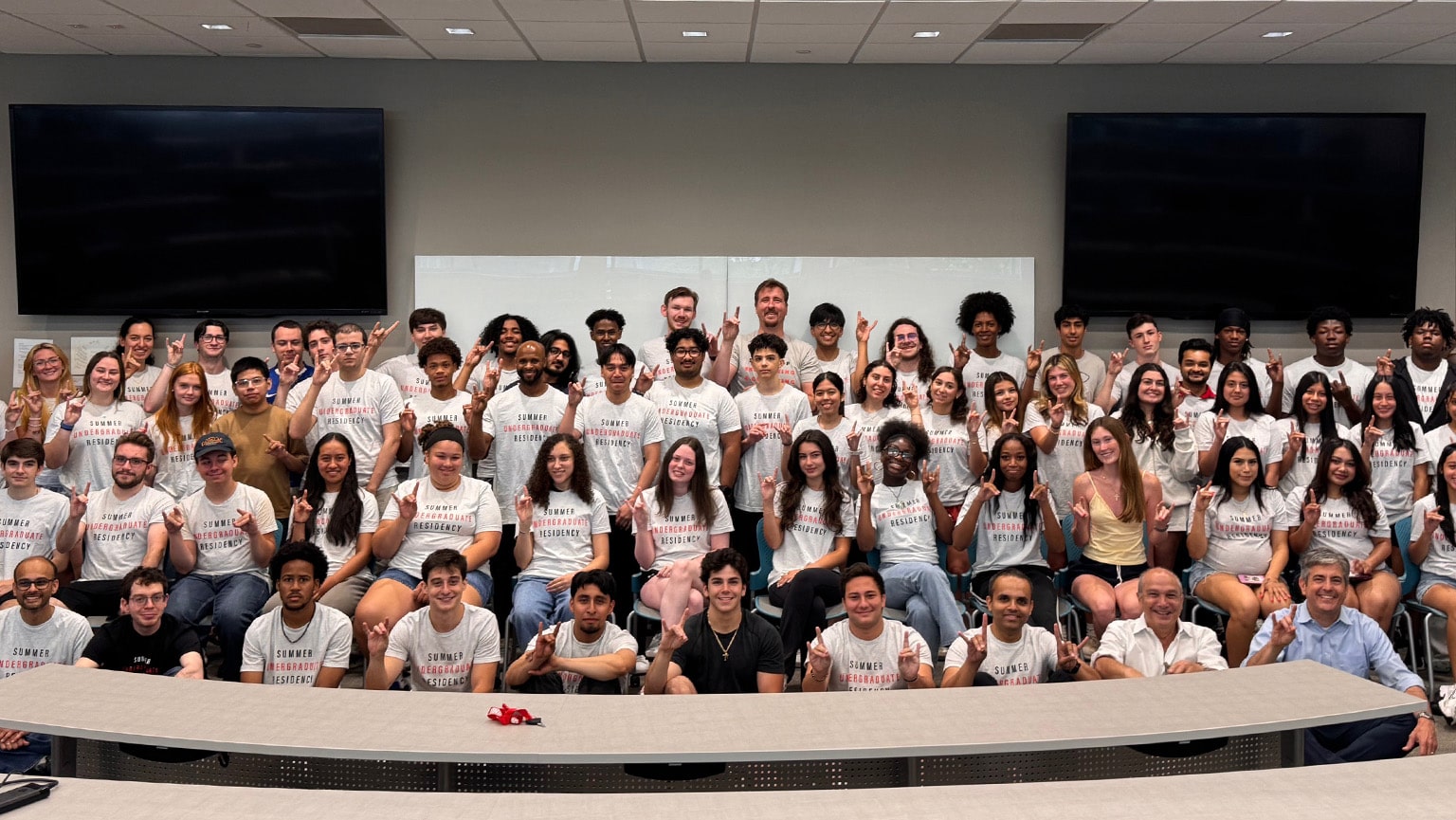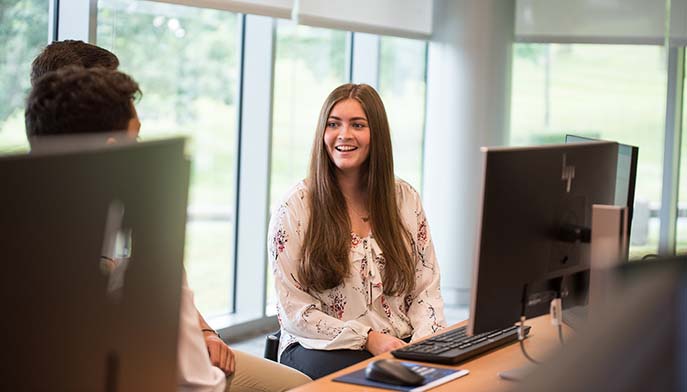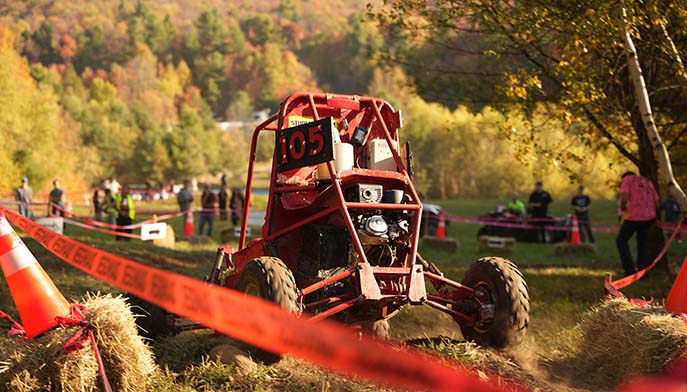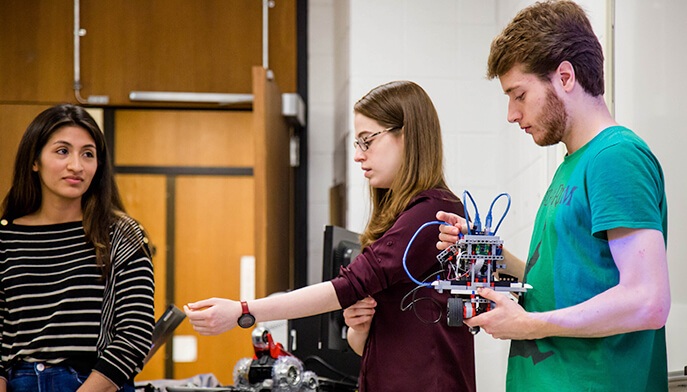This summer, the School of Engineering and Computing hosted its largest Summer Undergraduate Research Residency to date, with more than 40 innovative projects taking place in labs across campus. Open to both undergraduates and high school students, the eight-week residency allowed students to gain hands-on experience in faculty-mentored research.
Over the course of the residency, students collaborated closely with faculty on topics ranging from artificial intelligence and cybersecurity awareness to biofabrication and robotic vision systems. The program culminated in a Summer Research Symposium held on July 24 in the Dolan Event Hall, where students shared their work through poster presentations.
One research team, led by Naser Haghbin, PhD, assistant professor of mechanical engineering and director of the Innovation Annex, and Isaac Macwan, PhD, associate professor of electrical and bioengineering, looked into biomedical engineering and advanced manufacturing with a focus on tissue engineering. Undergraduate and graduate students Ryan Bordsen ’26, Megan Brunner ’27, Rebecca Chory ’28, Andrew London ’28, and Phillip Sgobba MS’27 explored scaffold fabrication through electrospinning nanofibers, filament-based 3D printing, and resin-based 3D printing, all in support of regenerative medicine.
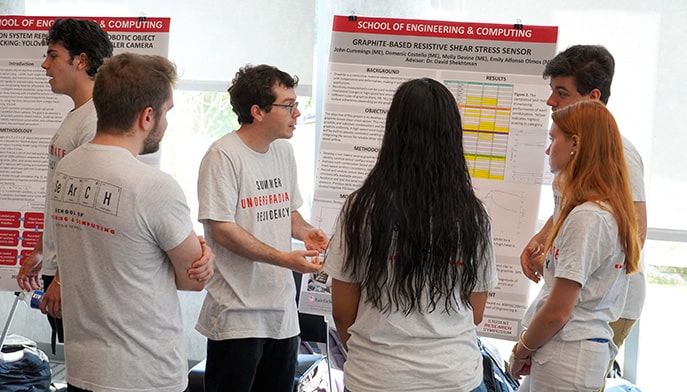
Dr. Haghbin shared, “What’s been especially meaningful to me this summer is seeing more young women actively engaged in engineering research in my lab. In a field that’s long struggled with gender imbalance, it’s incredibly rewarding to see their growing confidence, curiosity, and sense of belonging in a research setting. Their energy has truly enriched the lab.”
Fairfield Bellarmine graduates Johan Lantigua AA’25,'27; Asghar Shah AA’25,'27; and Thaddeus Graham AA’25,'27; alongside John Drazan, PhD, assistant professor of biomedical engineering, worked on a research project titled “Data-Driven Athletic Development: Engaging Young Athletes in STEM Through Performance Analytics.” Their work aims to bridge the gap between youth sports and STEM education by building digital tools that help athletes better understand their own performance through data.
“Our objective is to connect sports with STEM on a high school and middle school level,” said Lantigua. “We built a web platform that takes an athlete's performance data—like their jump height—and turns it into a spider chart that makes data easy to analyze. Our inspiration for this was the popular game among young athletes, NBA 2K. The goal is to show young athletes how science and data can help their performance on the court.”
The team was inspired by the work of Dr. Drazan, referencing his paper "Biomechanists Can Revolutionize the ‘STEM Pipeline’ by Engaging Young Athletes in Sports-Science Based STEM Outreach."
“The amount of kids that participate in STEM-related clubs is not even close to the amount that participate in sports clubs," noted Lantigua. "Since so many kids are passionate about sports, Dr. Drazan has shown how sports can be a great bridge to STEM.”
